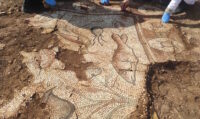 A mosaic with marine creatures from a Roman villa has been discovered in a rescue excavation in southeastern Turkey’s Mardin province. The excavation was triggered by reports of illegal looting near the village of Uzunkaya, a rural area 20 miles from the city center of Mardin. Archaeologists were examining the area and discovered evidence of extensive looting activity. Pits had been dug all over the site, causing severe damage to the architectural remains at the site.
A mosaic with marine creatures from a Roman villa has been discovered in a rescue excavation in southeastern Turkey’s Mardin province. The excavation was triggered by reports of illegal looting near the village of Uzunkaya, a rural area 20 miles from the city center of Mardin. Archaeologists were examining the area and discovered evidence of extensive looting activity. Pits had been dug all over the site, causing severe damage to the architectural remains at the site.
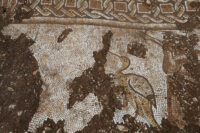 An emergency rescue excavation to salvage whatever was left began in October. The team unearthed sections of mosaic floors from a late Roman villa rustica, a country estate that had both a luxurious home for the family to live in and working buildings dedicated to agriculture and the crafts needed to operate the farmstead. The villa rustica dates to between the 5th and 7th centuries.
An emergency rescue excavation to salvage whatever was left began in October. The team unearthed sections of mosaic floors from a late Roman villa rustica, a country estate that had both a luxurious home for the family to live in and working buildings dedicated to agriculture and the crafts needed to operate the farmstead. The villa rustica dates to between the 5th and 7th centuries.
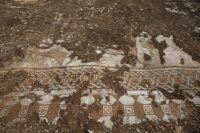 Surrounding the villa are small rooms where servants, workers and soldiers would have slept. Other structures on the southern slope of the site, likely the working portion of the estate, have yet to be explored. There is also a necropolis on the site. The mosaics were from the main house.
Surrounding the villa are small rooms where servants, workers and soldiers would have slept. Other structures on the southern slope of the site, likely the working portion of the estate, have yet to be explored. There is also a necropolis on the site. The mosaics were from the main house.
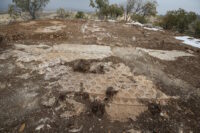 The mosaic floors feature numerous marine creatures — octopuses, different species of fish, mussels, seals, eels, aquatic plants, fishing birds — as well as geometric motifs including guilloche knots, meanders, hexagons, octagons, concentric squares and fan shapes that are believed to be stylized fish scales. In total, the mosaics cover an area of approximately 1,000 square feet. Mosaics with animal figures have been found in the region before, but this is the first to focus solely on sea creatures.
The mosaic floors feature numerous marine creatures — octopuses, different species of fish, mussels, seals, eels, aquatic plants, fishing birds — as well as geometric motifs including guilloche knots, meanders, hexagons, octagons, concentric squares and fan shapes that are believed to be stylized fish scales. In total, the mosaics cover an area of approximately 1,000 square feet. Mosaics with animal figures have been found in the region before, but this is the first to focus solely on sea creatures.
Archaeologists plan to raise the mosaics to prevent further destruction and to preserve them for eventual exhibition in a museum.
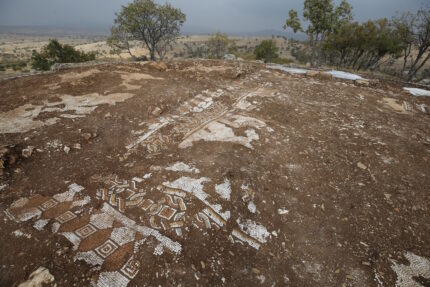
When was it discoverd?